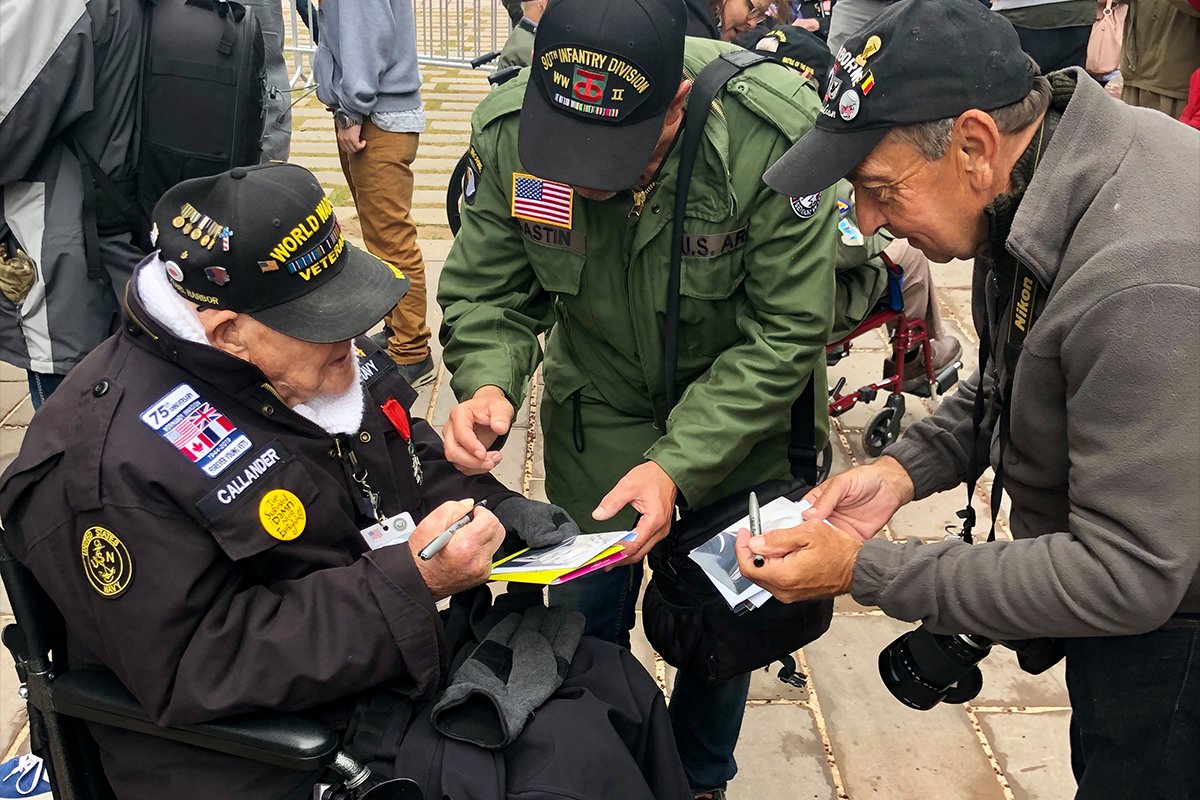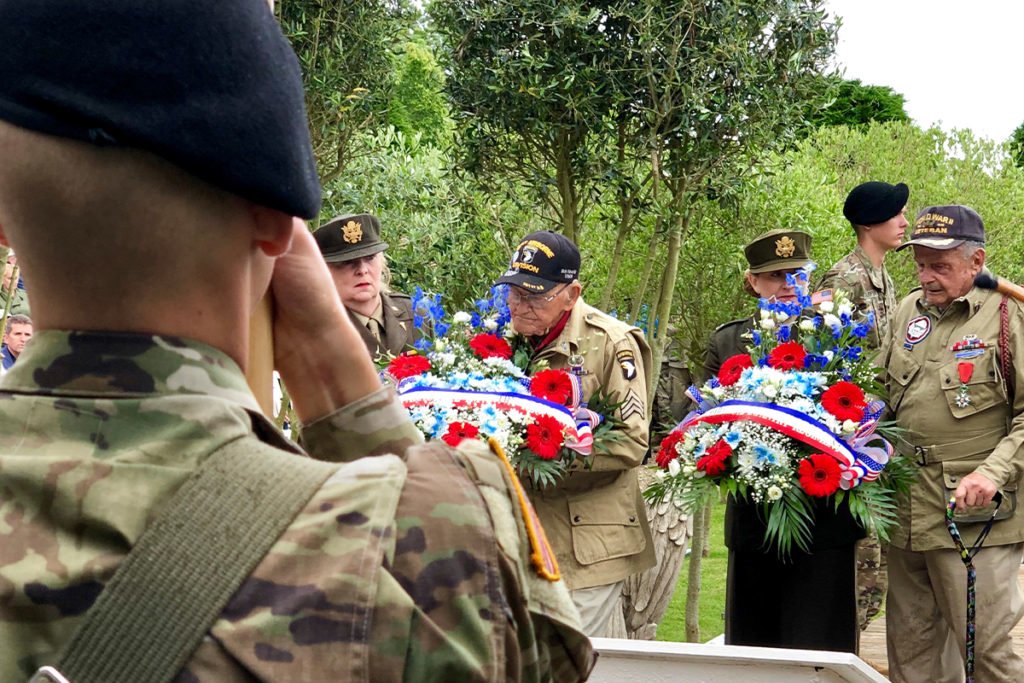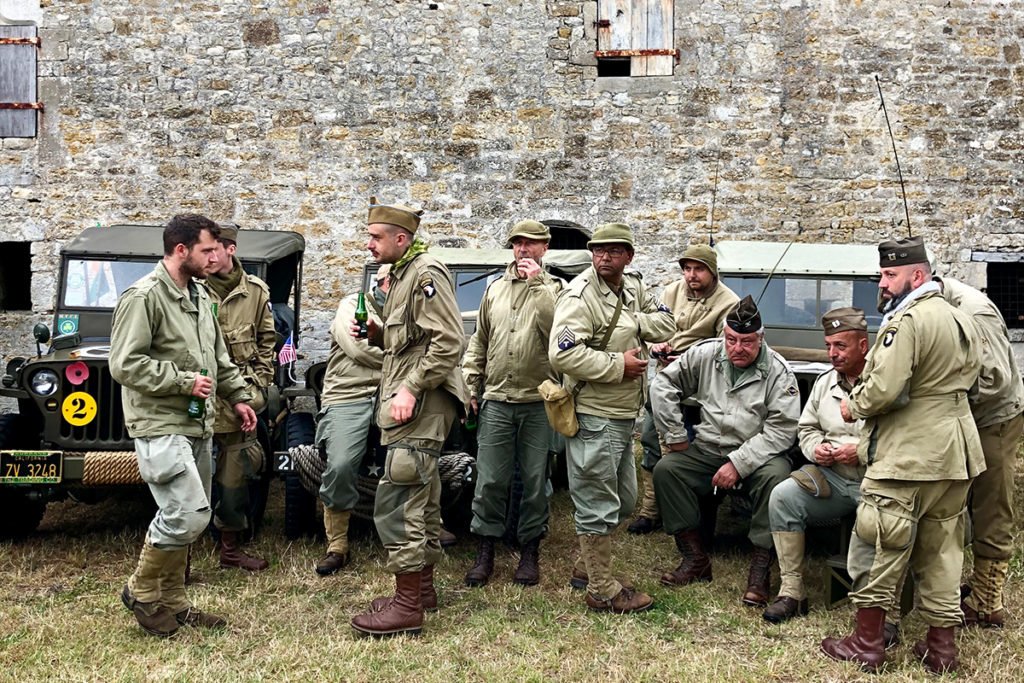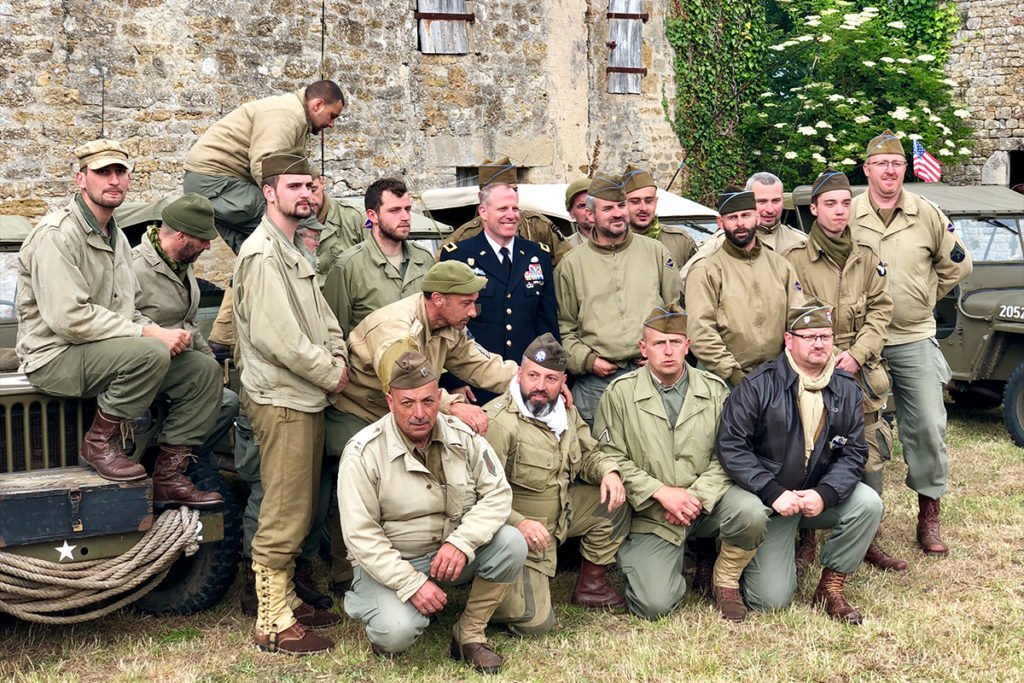
Sainte-Mère-Église is a quaint village in the Normandy region of France. It’s spotted with brick buildings and cobblestone streets. A church overlooks the town square; a paratrooper mannequin hangs from his parachute from the steeple. It’s just a small town in the French countryside.
Today, June 7, 2019, the town is celebrating the 75th anniversary of the D-Day invasion. This commemoration is special for Sainte-Mère-Église because it was the first town liberated from Nazi occupation. It was also a remarkably different scene in 1944 when 13,787 soldiers’ bodies were scattered across the town. All died carrying out their mission to fight for control of this French town.
Today was a cold and rainy day. Cliché as it may seem, it’s perfectly fitting for a ceremony commemorating the area’s three temporary cemeteries built to hold the corpses of thousands of soldiers that died during that brutal battle.

The town’s mayor, Jean Quetier, spoke to a crowd that included members of the French and German militaries, current members of the U.S. Army’s 82nd Airborne Division, and a few of the dwindling number of World War II veterans.
Quetier explained that cemetery number one, located 200 yards from where everyone was gathered, initially held 3,195 buried soldiers. Cemetery number two, situated along the road of Chef-du-Pont, held the bodies of 4,788 soldiers — including General Theodore Roosevelt Jr. Cemetery number three, 2 miles away in Carquebut, held 5,804 buried soldiers. After the war ended in 1948, roughly two-thirds of the American soldiers’ bodies were repatriated to the United States at the request of their families.
Today, Sainte-Mère-Église has a population of just over 4,000 people. It’s harrowing to think about the vast amount of bodies stacked in the area. One speaker tried to paint that picture for the crowd, saying, “Imagine after the joy of having been liberated, the reality of the war making an urgent impression … Parachutes are pulled from the trees … Imagine, during days and weeks, the temporary cemeteries expanding in Sainte-Mère-Église.”

I couldn’t help but imagine. “The men digging while the trucks with white crosses bring their bodies. Imagine vast cemeteries, simple crosses, fresh graves as far as the eye can see. Imagine 13,000 graves here in this small town. Imagine that, if you can. And remember these men, who lost their lives so that others could keep theirs. Remember them always so that at any moment you can cultivate peace with others — and also with yourself — so that here we shall never know the graves with white crosses as far as the eye can see.”
After hearing her speak, I’m sure I’ll never forget.
It was particularly moving to walk through the town and see the various storefronts painted with signs thanking Americans and Allied Forces for their contribution — even 75 years later. As an American, this was something I’d never felt before. It often seems that we are supposed to feel embarrassed to be American, and even apologize for our country of origin.
“Imagine vast cemeteries, simple crosses, fresh graves as far as the eye can see. Imagine 13,000 graves here in this small town.”
When I first traveled to Lyon, France, for a study abroad program in the summer of 2003 — during George W. Bush’s presidency — the disgust toward Americans was palpable. At that time, being American was something we were told to hide. Our teachers warned us that we might have a hard time getting around, and sometimes that was true. When the small percentage of French people who felt exceptional animosity toward Americans pointed us out or heard our accents, they would bully us and yell at us as we walked down the streets. Some students even went so far as to put Canadian patches on their backpacks so they would not be bothered.
At one point, I was chased off a train.
But as I stood here today in Normandy and felt the love, compassion, and harmony of all of these countries coming together, to include our German brothers and sisters, I was moved to tears. And what better way to represent this unity than through music.

The band played “Taps” and “The Star-Spangled Banner” as the Americans in the crowd proudly saluted. Later, a small group of Germans sang in a hushed voice as the band played their anthem, “Deutschlandlied.” And, finally, when the band played “La Marseillaise,” the French portion of the audience burst into song to support their national anthem, loud and proud.
Because of the sacrifices made 75 years ago, Americans, French, and Germans are able to come together as friends. Together, we’re all able to remember why we should remain friends.
This is the fourth in a series of dispatches while Coffee or Die is in Normandy, France, for the 75th anniversary of D-Day.

Shana McInnes is a contributing writer for Coffee or Die. She graduated from the University of Texas at Austin with degrees in Radio-Television-Film and French. Since then, she spent 10 years as a news producer for organizations such as E! News, Fuse News, and Revolt TV. For the past five years, she has directed and produced digital, short-form documentaries for brands such as Honda, Coors, Google, and Black Rifle Coffee Company, which have received a total of over 300 million views. She likes her coffee black.
BRCC and Bad Moon Print Press team up for an exclusive, limited-edition T-shirt design!
BRCC partners with Team Room Design for an exclusive T-shirt release!
Thirty Seconds Out has partnered with BRCC for an exclusive shirt design invoking the God of Winter.
Lucas O'Hara of Grizzly Forge has teamed up with BRCC for a badass, exclusive Shirt Club T-shirt design featuring his most popular knife and tiomahawk.
Coffee or Die sits down with one of the graphic designers behind Black Rifle Coffee's signature look and vibe.
Biden will award the Medal of Honor to a Vietnam War Army helicopter pilot who risked his life to save a reconnaissance team from almost certain death.
Ever wonder how much Jack Mandaville would f*ck sh*t up if he went back in time? The American Revolution didn't even see him coming.
A nearly 200-year-old West Point time capsule that at first appeared to yield little more than dust contains hidden treasure, the US Military Academy said.












